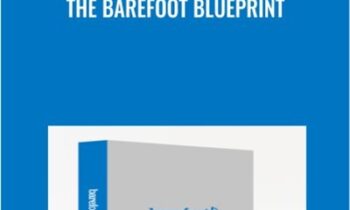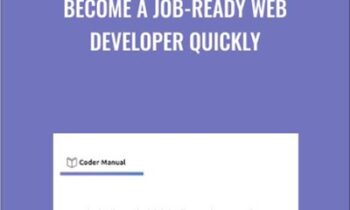$995.00 Original price was: $995.00.$123.00Current price is: $123.00.
Before I continue showing you how to look up your prior data for URL’s and why it is important, I need to show you how to map out new keywords to your URL’s if the current data you have on Search Console doesn’t match.
 Purchase this course you will earn 123 Points worth of $12.30
Purchase this course you will earn 123 Points worth of $12.30Elevate your skills with the Chase Reiner – SEO Audit Checklist (The Ultimate 2019 SEO Roadmap Template) course, available for just $995.00 Original price was: $995.00.$123.00Current price is: $123.00. on Utralist.com! Browse our curated selection of over 60,000 downloadable digital courses across diverse eCommerce. Benefit from expert-led, self-paced instruction and save over 80%. Start learning smarter today!
Before I continue showing you how to look up your prior data for URL’s and why it is important, I need to show you how to map out new keywords to your URL’s if the current data you have on Search Console doesn’t match.
Purchase Chase Reiner – SEO Audit Checklist (The Ultimate 2019 SEO Roadmap Template) courses at here with PRICE $995 $123
Chase Reiner – SEO Audit Checklist (The Ultimate 2019 SEO Roadmap Template)
With hundreds of audit videos and reviews, I have accumulated an insane amount of expertise and knowledge in White Hat SEO audits. I can easily say that when it comes to SEO, SEO Audits are hands down my biggest area of specialization.

Quick Steps For Using The Audit Checklist

Step 1: Download Screaming Frog
This checklist is virtually impossible to use unless you download Screaming Frog to crawl your site.

Step 2: Watch The Main Tutorial
The checklist is pretty straightforward, once you download the checklist you’re going to want to first watch the main checklist tutorial

Step 3: Attract Leads By Offering Them an Audit For Free
Look through Google for businesses that aren’t ranking well (preferably local sites) and offer them the free audit

Step 4: Upsell Your Services
After you give a business a free audit it’s pretty easy to get them paying for implementations of the audit. If you’d like to get certified in SEO implementations please check out my SEO Certification program.
Full Guide On How To Use The Audit Checklist
What’s up there SEO Pros?
Today you’re going to discover how to do an SEO audit in three different phases.
Phase 1, phase 2 and Phase 3 to be exact.
What I’m going to be specifically doing here is showing you how I bring clients in with an initial site-wide SEO audit and then I’ll be revealing to you how you can start working on individual URLs in phase two.
After that, we will move into Phase 3 which is where we begin implementing keyword research and content clustering for a web site in order to get it to rank long term for mega difficult/competitive keywords.
Just a little proof, here is how much I’ve made from selling SEO services in the last year or so (not including Paypal payments)
How To Start Giving Away Your Audits
Giving away your audit should be extremely easy and straightforward.
These days, everyone and their mom needs an audit. Even “SEO Giants” like Neil Patel could use an audit and trust me, I’ve audited his site, it needs some work.
Since I’m guessing you probably don’t have much authority, your best bet is to start with local websites in your area.
I will you advise against cold calling (however it does work and it is how I landed my first $300 clients four years ago) it is, unfortunately, an extremely spammed technique and even with my current authority I personally wouldn’t do it.
So Here’s What You Can Do
Start by walking into shops in your area or booking appointments with businesses that have low rankings on Google.
I recently booked a $50 session with a chiropractor and simply told him that it was very hard to find him online.
After a little conversation, I was able to convince him to give him an audit for free and I wound up getting him as a client.
Note: when telling business owners what you do, lead with your best quality that’s hyper relevant to their niche or location.
For instance, if you specialize in chiropractors and you’ve already been able to rank your own site in a similar niche, simply tell them what you did and that you want to audit their site to do something similar.
Or, if you are like most SEO’s and have ranked #1 in your area of something like SEO or web design, tell them that you are number 1 in their area.
Starting Out With The Phase 1 Audit
Phase 1: Sitewide SEO audit
The theory here is that you want to work from the ground up.
For example, if you started working on a house you ideally don’t want to start working on adding new floors (content) or fixing individual issues like some of the windows on the top floor (individual URL’s) because if the whole house collapses than you’re basically fu****.
You want to work on the foundation of the house first (sitewide issues like page speed, indexation, SSL, bloat content, etc.) because the foundation is going to make or break the entire house or SEO strategy.

Moving To SEO Phase 2: Individual URL Optimizations
Depending on how long Phase 1 takes you to complete (it should only be a maximum of 10-15 hours), now you can move directly into optimizing individual URLs.
By fixing sitewide issues and then moving into optimizing the top trafficked URL’s on a website first, this is LITERALLY the quickest way I’ve found to show results to clients.
With that being said, here’s how you’re going to set up Phase 2.
1. Go back to the Screaming Frog crawl tab.

2. Scroll to the right until you see clicks (note you won’t see any data if the site you’re working on doesn’t have Search Console connected or doesn’t have any prior data/traffic)

3. Sort Clicks From Z to A

4. Create New Sheet and Name it Benchmark
5. Copy Screaming Frog Crawl Over To New Benchmark Tab
6. Move Clicks in Front Of URL’s
7. Right-click your top left column and add 6 new columns to the right labeled: Keyword, Clicks, CTR, Avg Position, Keyword Difficulty, and UR.
Now, before we go to the next step of mapping our keywords out, I need to talk about something very important.
Get Will Haimerl – Gearbubble Course 2.0 immediately download
Discovering New Keywords And Tapping Into Phase 3
Before I continue showing you how to look up your prior data for URL’s and why it is important, I need to show you how to map out new keywords to your URL’s if the current data you have on Search Console doesn’t match.
The first thing I do is I think about what I want to be recognized as and where I want to make most of my money from.
This can be tough for some of you as you may want to be known as somebody who does SEO audits, SEO services, SEO training, and more.
I can guarantee you one thing: Within anything you want to become a monster in, you must first hyper-focus on topic and then expand out from there.
For me, I know that I make most of my money from training people in SEO.
So with that being said, I want my main brand to revolve around something in regards to SEO training.
Which brings us to the intro of Phase 3: Keyword Research and Clustering
Phase 3 Partial Introduction
Since I know I want to rank for topics around SEO training, I will begin by going to ahrefs and typing in that main phrase into keyword explorer.

Next, I will click on all keyword ideas and I will also notice how high the keyword difficulty is.

Note: I generally want to shoot for targeting phrases a range within what my pages are ranking for based on average keyword difficulty which I can view in Site Explorer by plugging my site in and then click on organic keywords.

I can see that most of the keywords I have ranking are within a KD range of 1 to 50. This indicates to me that with on page and content clustering work I could likely rank for this keyword in the next 3 – 6 months.

Next, if I head back to all keyword ideas in keyword explorer, I add an include filter to see everything with word “training” in the keyphrase and then I sort by parent topic.

One thing I notice is that there are easier, longer tail keywords that I can start off targeting and as I build more authority and presence for these longer tail keywords, I can begin optimizing more for the general phrases within Phase 2 (which we are about to jump back to).

Read more: http://archive.is/11wKM
Purchase Chase Reiner – SEO Audit Checklist (The Ultimate 2019 SEO Roadmap Template) courses at here with PRICE $995 $123
Cultivate continuous growth with the Chase Reiner – SEO Audit Checklist (The Ultimate 2019 SEO Roadmap Template) course at Utralist.com! Unlock lifetime access to premium digital content, meticulously designed for both career advancement and personal enrichment.
- Lifetime Access: Enjoy limitless access to your purchased courses.
- Exceptional Value: Benefit from savings up to 80% on high-quality courses.
- Secure Transactions: Your payments are always safe and protected.
- Practical Application: Gain real-world skills applicable to your goals.
- Instant Accessibility: Begin your learning journey immediately after buying.
- Device Compatible: Access your courses seamlessly on any device.
Transform your potential with Utralist.com!
Related products
eCommerce
‘Exquisite Performance Coaching’ 4 Audio CD Set + ‘Working With Michael’ Video – Dr Joseph Riggio
= 61 Points
= 143 Points
eCommerce
= 35 Points
eCommerce
= 51 Points
= 27 Points
eCommerce
= 83 Points
eCommerce
= 51 Points
= 63 Points













